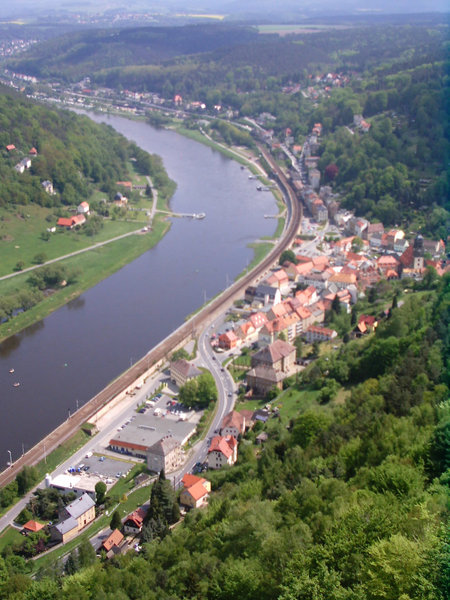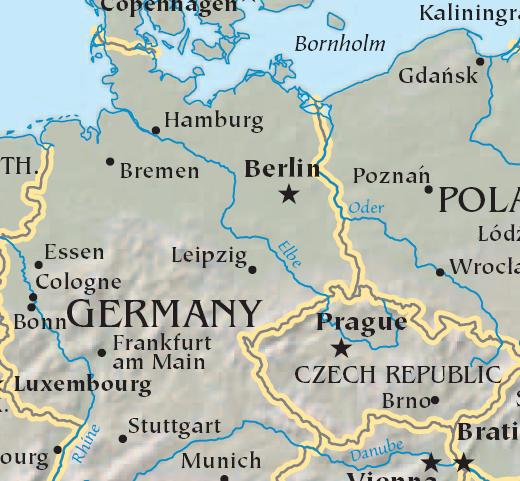Word of the Day
Elbe (ELL-buh)
· Common clues: Czech river; Hamburg's river
· Crossword puzzle frequency: 6 times a year
· Frequency in English language: 39455 / 86800
The Elbe River is one of the major waterways of central Europe. It originates in the North West Czech Republic before traversing much of Germany and finally emptying into the North Sea.

Geography
The Elbe rises at an altitude of about 1400 m (4593 ft). Of the numerous small streams whose waters compose the infant river, the most important is the Bíle Labe, or White Elbe. After plunging down the 60 km (37 miles) of the Labsky vodopad, the latter stream unites with the steep torrential Male Labe, and thereafter the united stream of the Elbe pursues a southerly course, emerging from the mountain glens at and continuing on to Pardubice, where it turns sharply to the west. At Kolin some 43 km (27 miles) further on, it bends gradually towards the north-west.
A little above Brandys nad Labem it picks up the Jizera and at Melník it has its stream more than doubled in volume by the Vltava, a river which winds northwards through Bohemia. Some distance lower down, at Litomenice, the waters of the Elbe are tinted by the reddish Ohre. Thus augmented, and swollen into a stream 140 m (459 ft) wide, the Elbe carves a path through the basaltic mass of the Ceske Stredohori, churning its way through a deep, narrow rocky gorge. Shortly after crossing the Czech-German frontier, and passing through the sandstone defiles, the stream assumes a north-westerly direction, which on the whole it preserves right to the North Sea.
The river roles rolls through Dresden and finally, beyond Meissen, enters on its long journey across the North German plain passing along the former border of East Germany, touching Torgau, Wittenberg, Magdeburg, Wittenberge, and Hamburg on the way, and gathering into itself the waters of the Mulde and Saale from the west, and those of the Schwarze Elster, Havel and Elde from the east. Soon the Elbe reaches Hamburg, and then passes through Holstein until it becomes merged in the North Sea off Cuxhaven. Near its debauch into the North See it passes Brunsbuttel and the entrance to the Kiel Canal.
The Elbe has been navigable by commercial vessels since 1842, and provides important trade links as far inland as Prague. The river is linked by canals to the industrial areas of Germany and to Berlin. The Elbe-Lübeck Canal links the Elbe to the Baltic Sea, as does the Kiel Canal, whose western entrance is near the mouth of the Elbe.
Its name means 'river' (cf. Scandinavian älv).
The Elbe has long been an important delineator of European geography. The Romans knew the river as the Albis; however, they only attempted once to move the Eastern border of their Empire forward from the Rhine to the Elbe, and this attempt failed in the Battle of the Teutoburg Forest in 9 AD, after which they never seriously tried again. In the Middle Ages it formed the eastern limit of the Empire of Charlemagne. The rivers navigable sections were also essential to the success of the Hanseatic League and much trade was carried on its waters. In 1945 a section of the Elbe was made a section of the border between East and West Germany.
This article is licensed under the GNU Free Documentation License. It uses material from the Wikipedia article "Elbe".
|
|
